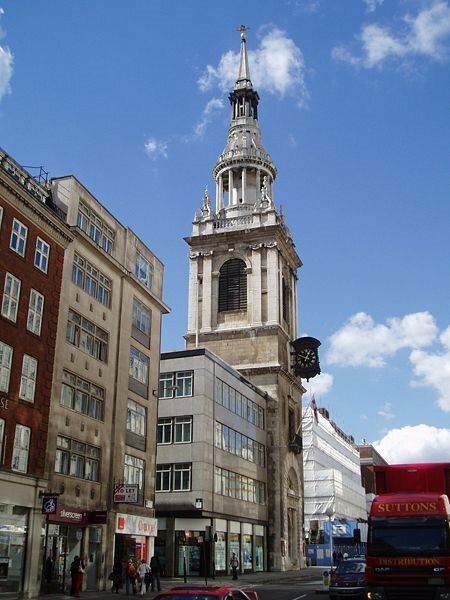There is archaeological evidence that a church has existed on the site in Cheapside since Saxon times and the current building was designed by Sir Christopher Wren. Its famous bells feature in the nursery rhyme 'Oranges and Lemons' and true cockneys have to be born within the sound of them. In 1914 a stone cut from the crypt was placed in Trinity Church, New York in commemoration of the fact that King William III had granted its vestry the same privileges as St Mary le Bow. Much of the church was destroyed in an air raid on 10th May 1941. A carved cherub was recovered from the ruins and was donated to the sister church in New York. The restored building was reconsecrated in 1964.
Credit for this entry to: Alan Patient of www.plaquesoflondon.co.uk







Comments are provided by Facebook, please ensure you are signed in here to see them